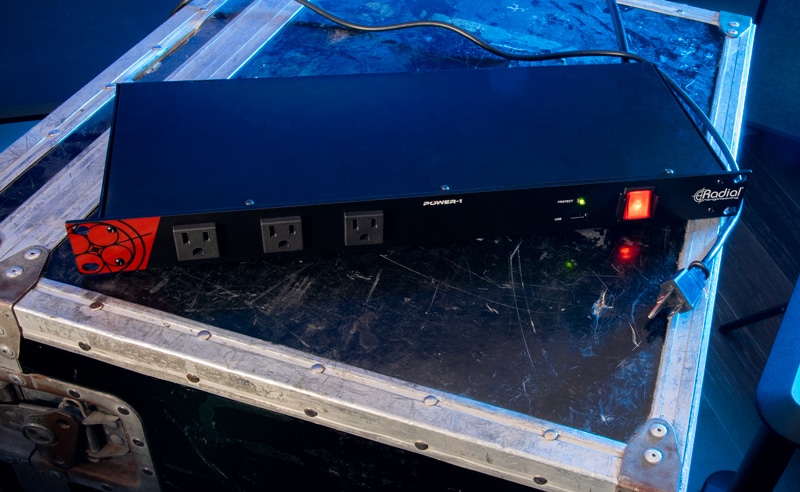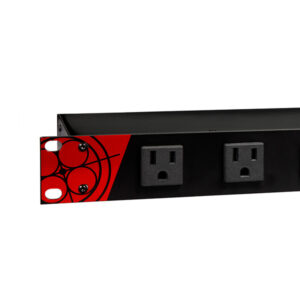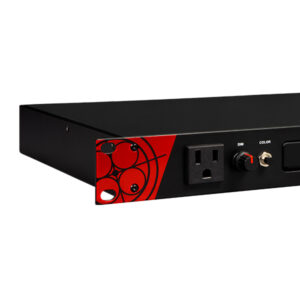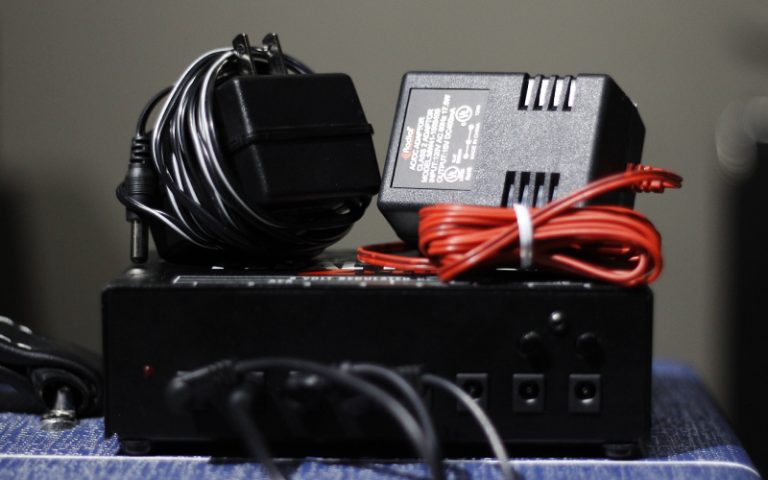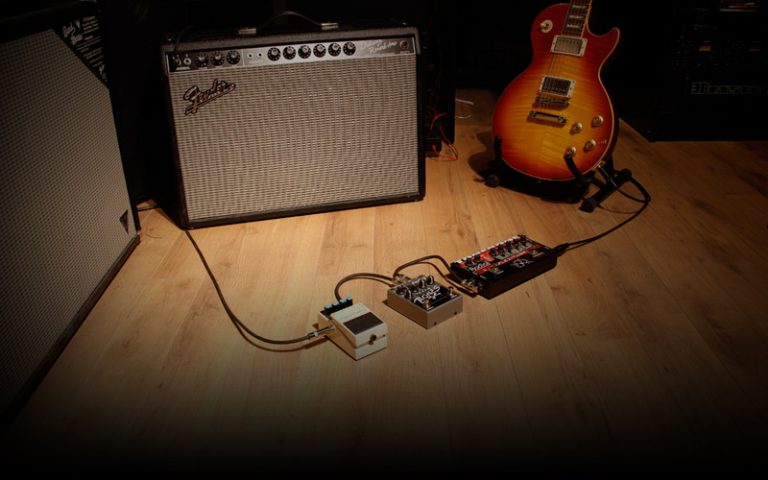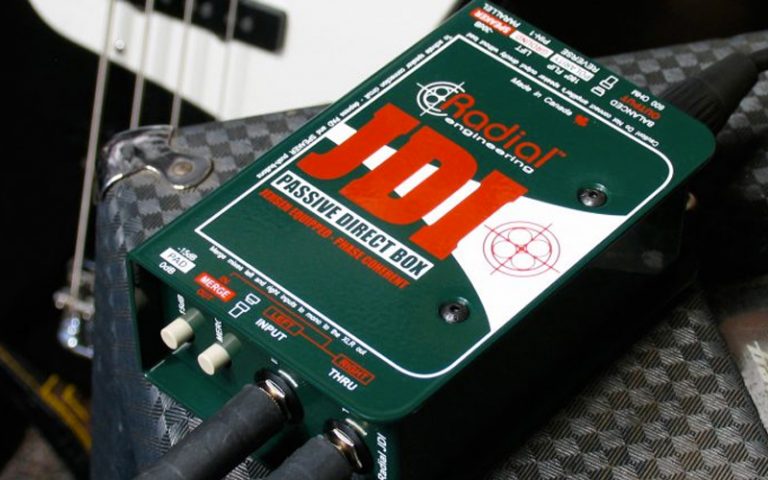You’re likely familiar with the term “power conditioner” but may not understand exactly what one is, how it differs from a surge suppressor or power strip, or more importantly, the vital role that it plays in protecting audio equipment such as mixing consoles, powered speakers, power amplifiers, keyboards, guitar amplifiers, and more.
Before getting into the five most important features every power conditioner should have, let’s highlight a key role that a power conditioner plays in your audio setup.
Basically, the primary purpose of a power conditioner is to filter, improve, and stabilize incoming AC power, especially during an AC power voltage spike. Think of a power conditioner as an audio system insurance policy of sorts, put in place to protect audio gear such as a mixer or power amplifier from damage resulting from power grid events such as a voltage spike, blackout, or brownout.
With that clarified, let’s get into the five key factors you should consider when purchasing a power conditioner.
1. High-Quality MOVs
If you’re not familiar with the term “MOV,” don’t worry. A MOV is an ultra-important feature of affordable power conditioners, but one that is rarely highlighted in the “Features and Benefits” section on a website or spec sheet. We’ll look at why MOVs are rarely highlighted in a moment.
But understanding what role a MOV plays in protecting your audio equipment is critical to ensuring you are buying the right power conditioner — one that is designed to adequately protect your connected equipment under less-than-ideal power supply situations.
MOV stands for “Metal Oxide Varistor.” A MOV is the surge protector component of a power conditioner that “takes the hit” when a power surge happens. Think of an airbag that deploys when your car gets hit in an accident. The airbag “waits” at the ready to deploy the second the car’s internal sensors communicate that a dangerous impact has occurred.
The MOV circuit in a power conditioner works the same way. It senses incoming power level irregularities and “deploys,” or shuts down power being sent to audio devices. This happens within microseconds when a significant spike or drop occurs — before that spike can reach your mixer, powered speaker, or other valuable audio equipment.
But here’s an important note: Not all MOVs are created equal. This is why doing some research before running down to your local hardware store to buy an inexpensive power strip can make a huge difference.
To keep the retail price low, some power conditioner manufacturers source and use MOVs from offshore suppliers. The problem with that is there’s often a high degree of variance in quality, performance, and reliability in these lower-cost offshore MOVs.
For this reason, look for a power conditioner that incorporates premium MOVs, which will be more reliable and effective. Remember, it’s not whether or not your power conditioner has a MOV — many do. It’s a matter of how high quality the MOVs are.
High-quality MOVs, generally offer superior thermal protection and have a much longer lifespan than offshore alternatives.
2. Front Plate Plug-in Accessibility
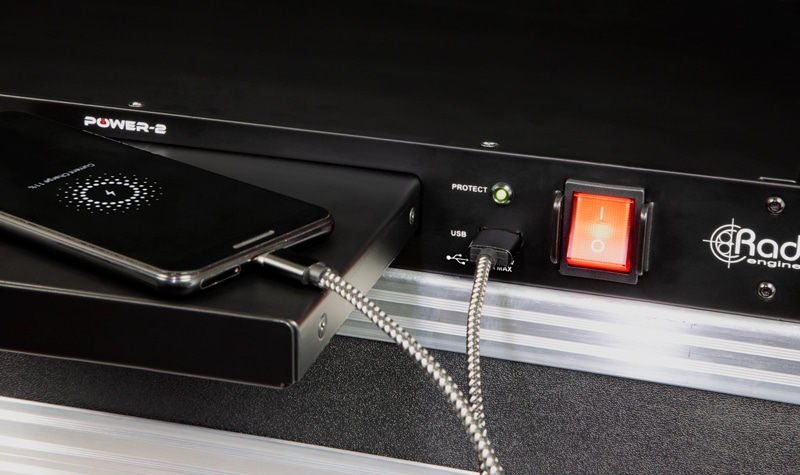
Most professional-quality power conditioners are designed to be installed in an audio rack, but many of these do not offer a front plate plug-in for USB accessories. With the increasing use of mobile devices such as mobile phones and tablets, it’s important to have an efficient and convenient way to keep these devices charged.
For example in the studio, a musician might want to share an audio clip on their phone, but their battery is dead. Simply hook up the phone to the front-facing USB port and you are ready to rock!
3. High-rejection RF Interference Filter
If you’ve ever been mixing audio and had the sound of an AM radio signal suddenly blast unexpectedly through the speakers, you understand the importance of an integrated high-rejection RFI (Radio Frequency Interference) filter in a power conditioner.
A high-rejection RF interference filter is used to keep unwanted noise such as high frequencies and AM radio signals out of the power line, preventing contamination of audio signals. Explaining how and why these signal interferences happen goes beyond the scope of this article, but suffice to say the list of potential technology culprits is long (from Bluetooth devices to WiFi connections), and getting longer every day as more new devices and technologies are introduced.
4. Long term warranty
This might sound odd, but in a best-case scenario, the ideal situation would be that you would never need to use the surge protector feature built into a power conditioner. Remember the earlier comparison of a power conditioner being like buying insurance? You purchase insurance in case a catastrophic incident or accident happens, but hope that you never have to use it.
But even if a situation doesn’t arise where you need surge protection due to a lightning strike or other power output abnormality, you do want to have confidence that your power conditioner will remain in working condition and “on-call” for as long as possible.
Remember, a good power conditioner does more than just protect against surges through the mains power source. It also handles important tasks like noise filtering, as mentioned above with the High-rejection RF Interference feature found on some power conditioners.
So, you want to purchase a power conditioner that has a professional-level long-term warranty. Terms for such a warranty can vary, sometimes only covering for 30 days. Radial Power comes with a standard 3-year warranty protecting you from any defects.
5. Adapts to Low Light Environments
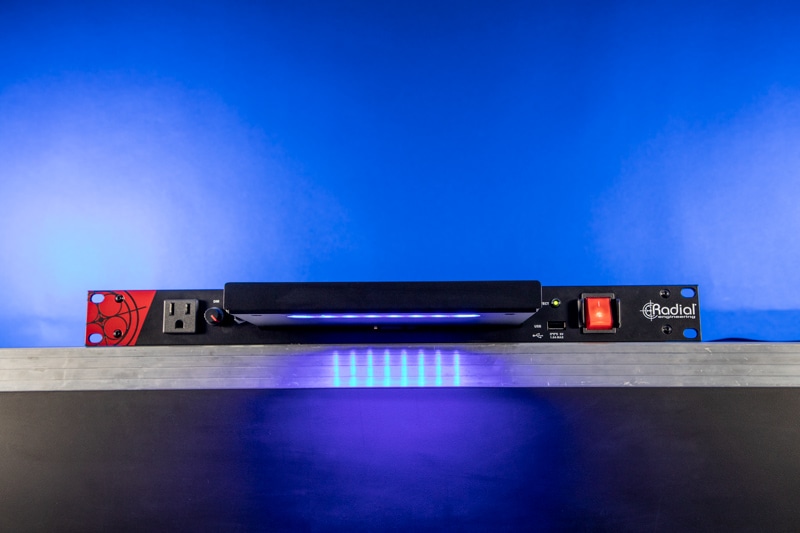
The last key “Top 5” feature you should consider in a power conditioner has less to do with protection and more to do with functionality. You may often be working in low-light environments where having quick at-a-glance visibility to all components in the rack — effects, patch bays, EQs, etc. — is essential. To address this need for low light visibility, look for a power conditioner that has a built-in light source that illuminates all of the components in your rack.
Ideally, this lighting source should be adjustable, both in terms of light intensity and color. The option to choose color, particularly with an LED-based light (LED lights burn cooler and last longer) will really come in handy if, for example, the mixing console position needs to stay dark, but you still need full access to your EQ and effects units. Being able to choose a less intrusive blue over a bright white light, for example, will make a world of difference both for you and the audience.
Wrapping Up
In summary, think of a power conditioner as an insurance policy for your valuable audio system. Whether yours is a $20,000 24-channel digital mixer or an 8-channel basic analog mixer, an unprotected power surge or line voltage spike can destroy every component in your audio system in an instant.
For a fraction of what you would pay to replace all of that gear, relying on a professional power conditioner with high-quality MOVs, USB accessory plug-in, RFI protection, professional warranty, and adaptability to a multi-use production environment, will give you peace of mind that your priceless audio gear is safe.



